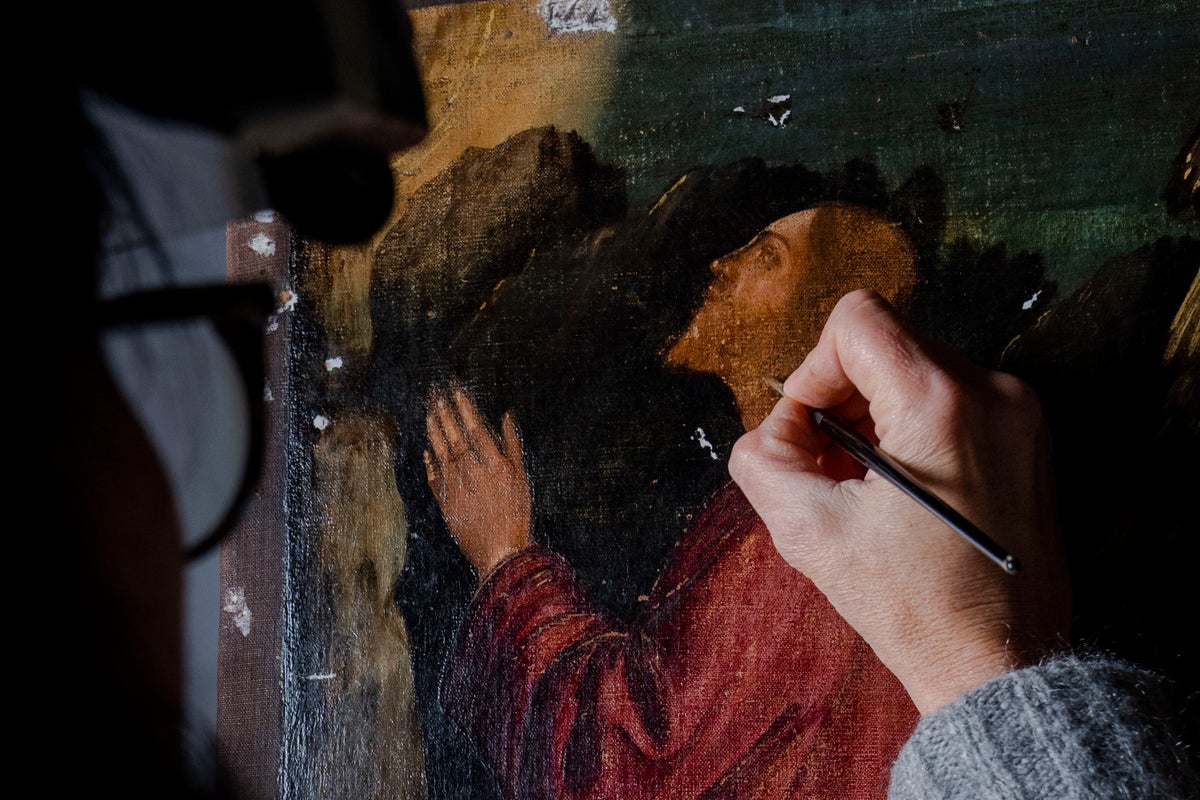
When most people think of “carpaccio,” they think of the thinly sliced raw beef appetizer made famous by Venice’s iconic Harry’s Bar. Few people know that the dish is named for a lesser-known Venetian, the Renaissance painter Vittore Carpaccio, because of the intense red hues he favored.
Carpaccio the painter has recently been getting more attention outside his native Venice. In November, the National Gallery in Washington inaugurated the first retrospective exhibit of his work outside Italy. The show, “Vittore Carpaccio: Master Storyteller of Renaissance Venice,” is set to move to Venice’s showcase Palazzo Ducale on March 18.
The Washington exhibit includes two Carpaccio paintings which, after a restoration, left Venice for the first time in more than 500 years.
“At first, we were a bit hesitant, because allowing these masterpieces to leave their natural habitat is always a risk,” said Piergiorgio Millich, the grand guardian of the institution that boasts having more Carpaccios under the same roof for which they were originally commissioned than anywhere else.
But after art conservator Valentina Piovan analyzed the works and undertook a yearlong restoration, she convinced the institution that the canvases could safely make the journey.
Piovan is now working on restoration of several other Carpaccios in the headquarters of the Scuola di San Giorgio degli Schiavoni fraternity, which was founded in 1451 by a group of Venetians as a social center providing medical and spiritual support for members — mostly sailors in the republic’s naval fleet. When the fleet defeated the Ottomans in the Turkish-Venetian wars, they were paid handsomely.
As a result, they were able to hire one of the most prominent Venetian painters of his time, Carpaccio, to paint a series of paintings dedicated to St. George, the legendary figure who slayed a dragon, saved a princess and convinced the Selenites to convert to Christianity.
In the first painting in the cycle “Saint George and the Dragon,” a masterpiece more than three meters (around 10 feet) long, Carpaccio paints the saint on horseback with his lance thrust into the mouth of the dragon and the ground littered with the body parts of partially devoured humans. The princess, dressed in a “carpaccio” red robe, clasps her hands together in gratitude as she watches the scene from a rocky outcropping above.
It is classic Carpaccio, a combination of narrative storytelling and attention to detail.
And it clearly was an inspiration for Giuseppe Cipriani, the Venetian restauranteur and owner of Harry’s Bar, who invented a dish named for the painter in the 1950s. According to the official Harry’s Bar history, Cipriani had a customer, Contessa Amalia Nani Mocenigo, whose doctors had prescribed a strict diet without cooked meat.
Cipriani came up with a dish of sliced raw beef with a sauce of mayonnaise and Worcestershire sauce, and named it after the painter in part because of its ressemblance to his favorite reds that were on exhibit in Venice at the time.
“I think people are starting to get an appreciation of paintings, Venetian paintings, from the very beginning of the 16th century, and also learn maybe where the word carpaccio,” came from, said Melissa Conn, director of the Venice office of Save Venice, an American nonprofit which has provided $400,000 for the restoration of several Carpaccio works.







